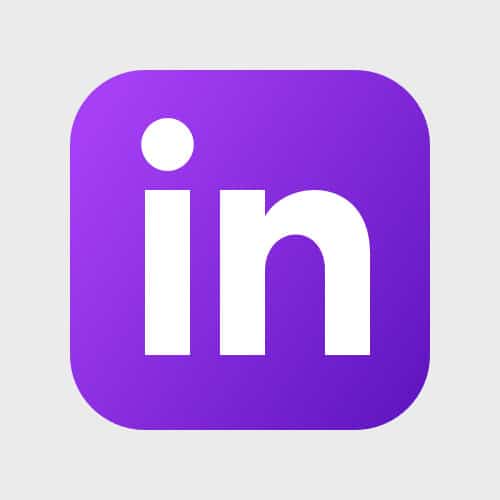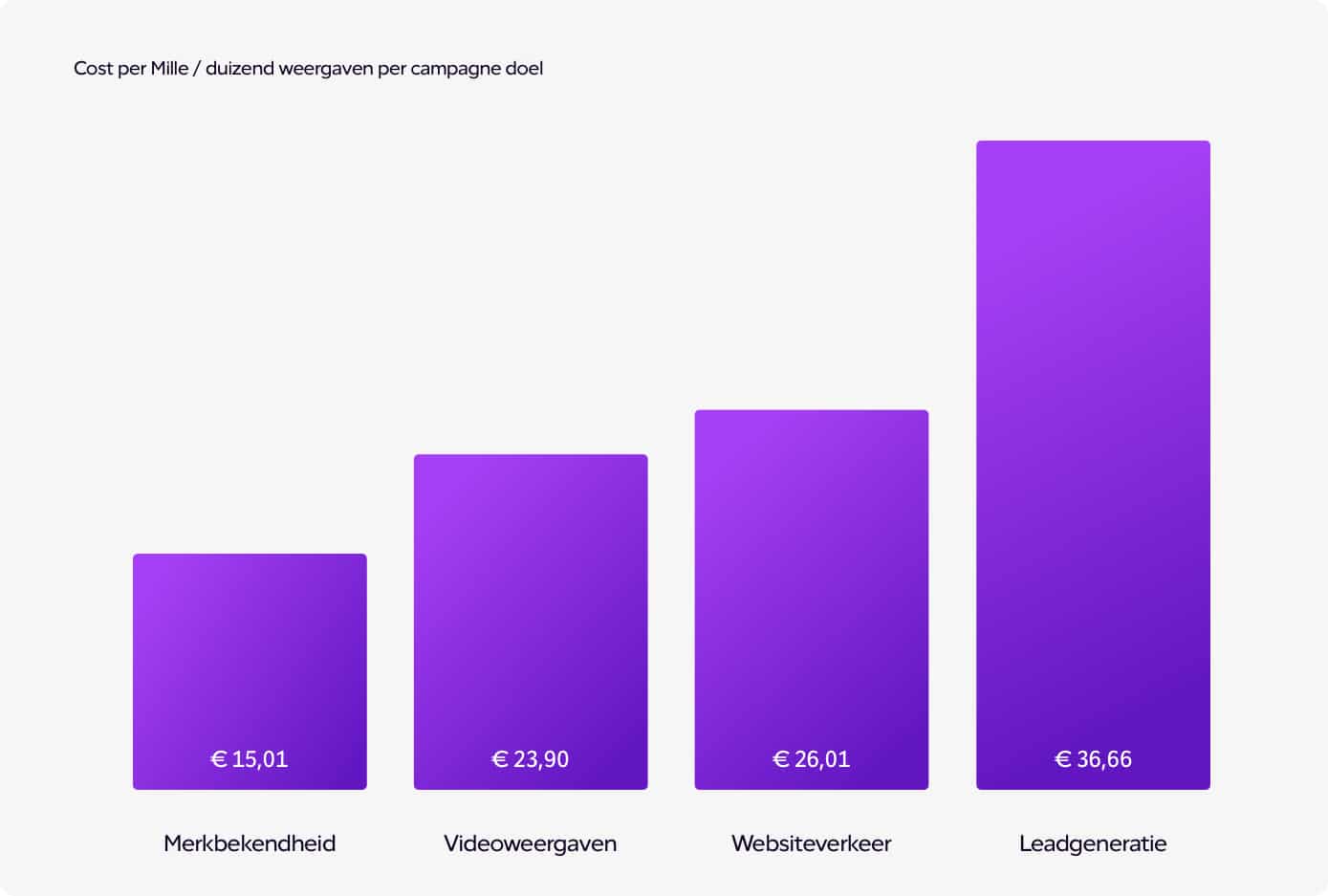*LinkedIn Advertising
LinkedIn CPM: A Comprehensive Explanation

You’re likely already familiar with the acronym CPM, which stands for Cost Per Mille. But what does this figure actually tell us? In this article, we’ll explain everything about CPM on LinkedIn. It’s a valuable KPI for assessing the performance of your campaign. That’s why we’ll tell you about the average LinkedIn CPM for various campaign goals and how to further optimize your LinkedIn campaign based on CPM.
Understanding LinkedIn CPM is essential for setting up an effective LinkedIn advertising campaign. It’s not only a significant bidding strategy but also a handy KPI to guide your campaign efforts. But first, let’s answer the question: what does CPM mean?
CPM meaning
CPM stands for Cost Per Mille, which refers to the cost per 1,000 impressions. On LinkedIn and many other advertising platforms, you can see this at both the campaign and advertisement level, showing how much it costs to display your campaign 1,000 times and the cost of displaying a specific advertisement 1,000 times.
Why Use CPM?
CPM is a commonly used metric on online advertising platforms. It serves as a handy KPI for comparing the costs and effectiveness of different platforms. But there are more reasons to use CPM in analyzing and optimizing campaigns:
- Cost Control: CPM quickly shows the cost of displaying your ad. In many campaigns and bidding strategies, CPM determines costs, so understanding CPM also helps control expenses.
- Budget Planning: Knowing the expected CPM can help align your budget and target audience. If your target audience is too large for your budget, you can adjust for a more focused campaign, and vice versa.
- Audience Optimization: Average CPM varies by audience. Based on CPM, you can make cost-effective choices for approaching different audiences.
- Comparison with Other Platforms: CPM simplifies comparing various advertising platforms.
- Measurability and ROI: CPM is one of the factors for easily determining how well a campaign performs.
- Optimization: Like other campaign KPIs, CPM is valuable for optimizing your advertising spend and campaign effectiveness.
LinkedIn CPM Compared to Other Platforms
LinkedIn is often perceived as a relatively expensive advertising platform, with higher CPMs compared to platforms like Instagram or Facebook. However, a higher CPM doesn’t necessarily mean you should avoid LinkedIn for advertising. It’s important to understand why LinkedIn’s CPM is higher to effectively use it for specific audiences and campaign goals.
LinkedIn’s Unique Business Focus
The main difference between LinkedIn and other (social) advertising platforms is its strong business orientation. This is reflected in the users, content, and targeting options available. LinkedIn ensures you reach people interested in work and career-related topics, who are also more likely to share and consume business-focused content. The targeting options, such as company names, job titles, education, and skills, give LinkedIn a unique business focus, making an impression or click on LinkedIn more valuable (and thus more costly) from a B2B perspective.
High-Quality Leads
The business focus of the platform deserves a separate mention for its ability to generate high-quality leads through a combination of campaign and audience targeting options.
Competition
Although LinkedIn is known for higher costs per 1,000 views, the actual CPM varies significantly by audience due to competition levels. For example, marketers, IT professionals, and healthcare professionals often see higher CPMs. However, in niche markets, the CPM may be relatively low while still targeting a valuable business audience.
Average LinkedIn CPM per Campaign Goal
What can you expect from LinkedIn’s CPM? We share the expected CPM for several commonly used campaign goals.

Factors Influencing LinkedIn CPM
To fully understand LinkedIn CPM, it’s important to know which factors influence it. We’ve already mentioned audience and competition, but other factors also affect LinkedIn CPM:
- Seasons: CPM can vary significantly during holidays, such as summer and autumn breaks, and around Christmas. This variation is due to your target audience’s activity on LinkedIn and the level of competition.
- Bidding Strategy: The options available for bidding strategies can greatly impact your results and CPM. You can choose from standard bidding on CPM or opt for alternative strategies, such as manual cost per cap or a limited CPM.
- Ad Type: Different ad types have varying costs. Testing different ad formats can be worthwhile, depending on your message and product or service.
- Campaign Goal: Not surprisingly, the CPM for brand awareness campaigns is lower than for lead generation campaigns.
- Ad Relevance: Relevant ads are rewarded by the algorithm with more views at lower costs.
- Quality of Ad Destination: The quality of, for example, your landing page also matters.
- Network and Devices: Where do you want your campaign to appear? You can choose from the LinkedIn network or the LinkedIn Audience Network and select between mobile and desktop.
Tips for Lowering LinkedIn CPM
Now that you understand what LinkedIn CPM is and how it works, you’ll naturally want to know how to achieve a low LinkedIn CPM for your campaigns. The key is to optimize your audience. Utilize LinkedIn’s unique targeting capabilities to define a highly specific audience. This allows you to create highly relevant ads, enhancing their effectiveness. From there, it’s about testing and optimizing, considering ad type, bidding strategy, campaign goal, and timing.
For further reading on LinkedIn CPM or exploring LinkedIn’s possibilities, check out our page on LinkedIn advertising. If you’d prefer to discuss options, we’re happy to share our knowledge and experience with LinkedIn campaigns across various B2B markets in a personal conversation.